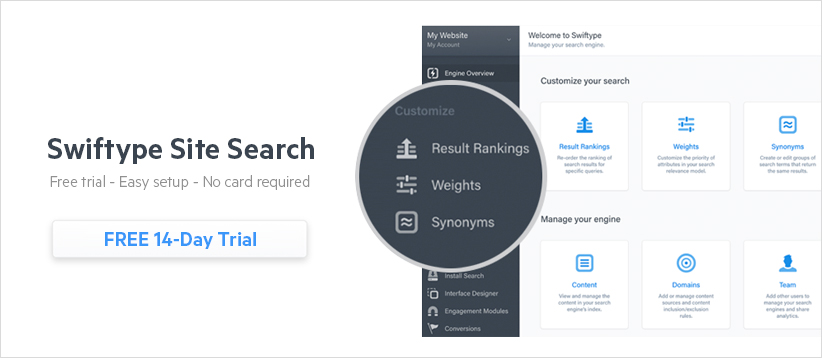Understanding and optimizing how buyers arrive and navigate through your website can be difficult. It’s especially frustrating since you know not capturing this information can leave you with costly gaps in conversion data.

The Aberdeen Group, widely known as a leader in the research and analysis of information technology and products, recently gathered insights on these data challenges. Their findings focused on “Site Search Solutions.” These are traditionally defined as platforms or tools that analyze and optimize a website visitor’s search experience. They can also shed light on the most popular content on your website or app. This ultimately gives you the real-time search analytics needed to reveal what, and whether, buyers are actually looking to buy.
Did you know that 37% of marketers actively invest in search solutions and 26% of those marketers average higher contribution to company revenue from marketing?
Aberdeen has assembled a full Buying Guide to outline all of the considerations you should take into account when evaluating an effective site search solution for your organization, but here’s a brief snapshot of what you need to know:
- Ease of Use and Implementation: Dealing with personnel limitations (available headcount, skillsets, bandwidth) is the top operational challenge cited by marketers in our research. Few marketers are coding experts, so it’s vital that the solution you choose doesn’t make already complex marketing operations more complex.
- Customization for Performance Optimization: Best-in-Class marketing teams are 55% more effective than all others at maintaining consistent, relevant, and personalized messaging. Staying up to speed with what’s relevant to buyers while maintaining consistency requires that site search solutions be customizable. The terms and topics buyers search for change; solutions need to allow users to adapt accordingly.
- Analytically Driven Alignment to Buyer Needs: The best solution for your business will serve up results that prompt the best actions for your buyers.
- Real Time Updates: The benefits of your site search solution should be immediately obvious. Marketers who use search solutions are 91% more effective at increasing productivity with integrated marketing technology. Real-time capabilities are critical for bringing the full utility of the technology to bear.
Download the FULL Aberdeen Buying Guide now to make sure you’re armed with all the detailed information needed in order to select the site search solution that’s right for you.
























